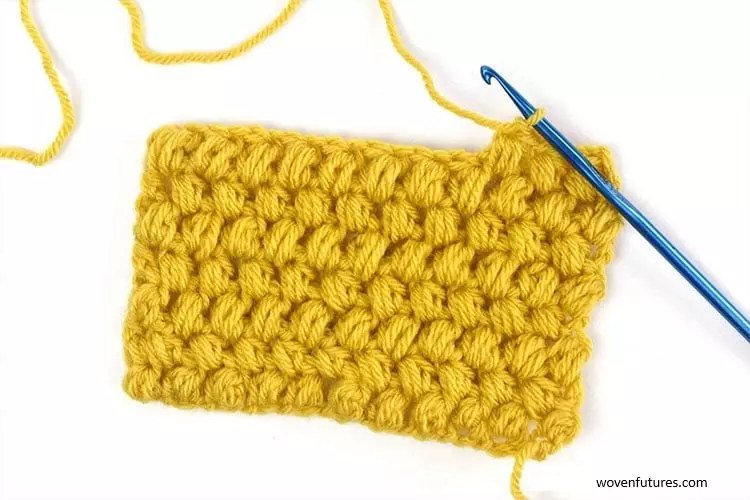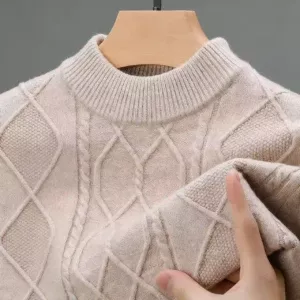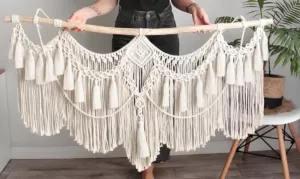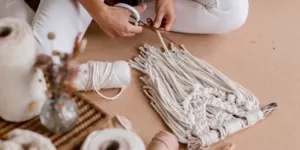Crochet and knitting are two beloved crafts that have been enjoyed by people for centuries. Both involve creating fabric from yarn or thread, yet they use different techniques and tools. Sometimes, you might come across a beautiful crochet pattern that you wish could be knit, especially if knitting is your preferred method. But is it possible to convert a crochet pattern to knit? The answer is yes, but with some caveats. Converting a crochet pattern to knitting involves understanding the fundamental differences between the two crafts, adapting stitch patterns, and making adjustments to achieve a similar end result. This article will guide you through the process of converting crochet patterns to knitting, highlighting key considerations and offering tips for success.
Understanding the Differences Between Crochet and Knitting
Before attempting to convert a crochet pattern to knit, it’s essential to understand the key differences between the two crafts:
1. Tools and Techniques:
- Crochet: In crochet, a single hook is used to create fabric by pulling loops of yarn through other loops. Only one active loop is held on the hook at a time.
- Knitting: Knitting uses two or more needles, with multiple active stitches held on the needles. The stitches are formed by pulling yarn through loops, but all the loops remain active until bound off.
2. Fabric Structure:
- Crochet: Crochet fabric tends to be thicker and less stretchy than knitted fabric. It also often has a more textured and three-dimensional appearance.
- Knitting: Knitted fabric is typically smoother, more elastic, and drapes more fluidly. The stitches are smaller and closer together, resulting in a finer fabric.
3. Stitch Conversion:
- Crochet Stitches: Common crochet stitches include single crochet (sc), double crochet (dc), treble crochet (tr), and slip stitch (sl st).
- Knitting Stitches: Basic knitting stitches include knit (k) and purl (p), with variations such as stockinette, garter, ribbing, and lace patterns.
Challenges in Converting Crochet to Knitting
Converting a crochet pattern to knit is not always straightforward due to the inherent differences in fabric structure and stitch techniques. Some challenges include:
1. Gauge Differences:
- Crochet stitches are generally larger and bulkier than knitting stitches. Therefore, the gauge, or the number of stitches per inch, will differ between the two. When converting, you may need to adjust the number of stitches and rows to match the desired dimensions.
2. Pattern Adaptation:
- Certain crochet stitches have no direct equivalent in knitting. For example, crochet’s unique textures, such as shell stitches or bobbles, may require creative knitting solutions to replicate.
3. Structural Differences:
- Some crochet patterns, like those involving intricate motifs or lace, can be difficult to translate into knitting without altering the final look of the piece. The openwork and decorative effects in crochet may not always translate well into the tighter, more uniform structure of knitting.
Steps to Convert a Crochet Pattern to Knit
Despite the challenges, it is possible to convert many crochet patterns into knitting. Here’s how you can do it:
1. Analyze the Crochet Pattern:
- Break down the crochet pattern into its basic components. Identify the stitch pattern, gauge, and construction method (e.g., working in the round, in rows, or motifs).
2. Determine the Equivalent Knitting Stitches:
- For each crochet stitch, find the closest knitting equivalent. For instance:
- Single crochet (sc) can be approximated with garter stitch or stockinette stitch in knitting.
- Double crochet (dc) might be replicated with stockinette stitch (knit on the right side, purl on the wrong side).
- Treble crochet (tr) could be translated to elongated stitches or a variation of lace knitting.
3. Adjust the Stitch Count:
- Calculate the number of knitting stitches needed to match the gauge of the crochet pattern. You may need to knit a swatch to compare gauges and make necessary adjustments.
4. Modify the Pattern as Needed:
- Some parts of the crochet pattern may need to be altered or simplified. For example, motifs that require specific crochet techniques (like granny squares) may need to be reimagined or omitted.
5. Swatch and Test:
- Before committing to the entire project, knit a small swatch of the converted pattern to test the results. Check for gauge accuracy, fabric feel, and overall appearance.
6. Consider Yarn Choice:
- The type of yarn used in crochet may behave differently when knitted. If the original crochet pattern used a thick, sturdy yarn, you might need to choose a lighter or more elastic yarn for knitting to achieve a similar drape.
Examples of Crochet-to-Knit Conversion
To illustrate the conversion process, let’s look at a few examples:
1. Converting a Crochet Scarf:
- Original Crochet Pattern: A simple scarf pattern using double crochet stitches throughout.
- Converted Knitting Pattern: A garter stitch scarf (knitting every row) or a stockinette stitch scarf (knit one row, purl the next) could mimic the texture of double crochet.
2. Converting a Crochet Granny Square Blanket:
- Original Crochet Pattern: A blanket made of multiple granny squares joined together.
- Converted Knitting Pattern: Knit individual squares using a garter stitch or a lace pattern that echoes the look of granny squares. The squares can be seamed together similarly to the crochet version.
3. Converting a Crochet Lace Shawl:
- Original Crochet Pattern: A delicate lace shawl with intricate openwork.
- Converted Knitting Pattern: A lace knitting pattern with similar motifs (e.g., eyelets, yarn overs) can be used. The knitting may require more stitches and rows to achieve the same size.
Tips for a Successful Conversion
When converting a crochet pattern to knit, keep these tips in mind:
1. Be Flexible:
- Understand that the converted project may not look exactly like the original. Embrace the differences and see them as a unique interpretation of the pattern.
2. Start with Simple Patterns:
- If you’re new to converting patterns, start with straightforward projects, such as scarves or simple blankets. Complex patterns with intricate stitch work may be more challenging.
3. Use Stitch Dictionaries:
- Consult knitting stitch dictionaries to find suitable stitch patterns that replicate the texture and appearance of the crochet design.
4. Take Notes:
- Document the conversion process, including any changes made to the stitch count, pattern adjustments, and swatch results. This will be helpful if you want to replicate or share your converted pattern.
5. Seek Out Existing Conversions:
- Sometimes, popular crochet patterns have already been converted to knitting by other crafters. Search online communities, forums, and pattern databases to see if a conversion exists.
FAQs
Can you convert any crochet pattern to knit?
- While many crochet patterns can be converted to knit, some designs with highly specific crochet techniques or intricate textures may not translate well. Simplification or creative adaptation is often required.
How do you convert a crochet stitch to a knitting stitch?
- Identify the crochet stitch’s texture and structure, then find a similar knitting stitch. For instance, a single crochet might correspond to a knit stitch, while a double crochet might resemble stockinette stitch.
Is the gauge the same for crochet and knitting?
- No, crochet stitches are generally larger than knitting stitches, so the gauge will differ. Adjust the stitch count and row count when converting to match the desired size.
What tools are needed for converting crochet to knit?
- Basic knitting tools include knitting needles, yarn, and a pattern reference. You may also need a crochet hook for certain techniques, such as casting on or picking up stitches.
Can you combine knitting and crochet in one project?
- Yes, many crafters combine both techniques in a single project, using crochet for edging or decorative elements and knitting for the main fabric. This hybrid approach allows you to enjoy the best of both crafts.
What are the benefits of converting crochet patterns to knitting?
- Converting patterns allows knitters to create designs originally intended for crochet, expanding their project possibilities. It also offers a way to explore different textures and techniques across both crafts.
Conclusion
Converting a crochet pattern to knit is an exciting challenge that allows you to explore the relationship between these two crafts. While not every pattern can be directly translated, with some creativity and flexibility, you can achieve beautiful results that honor the spirit of the original design. Whether you’re a seasoned knitter looking to expand your repertoire or a crocheter curious about knitting, converting patterns opens up a world of possibilities. Embrace the process, experiment, and enjoy the unique outcomes that come from blending crochet and knitting into one harmonious craft.









